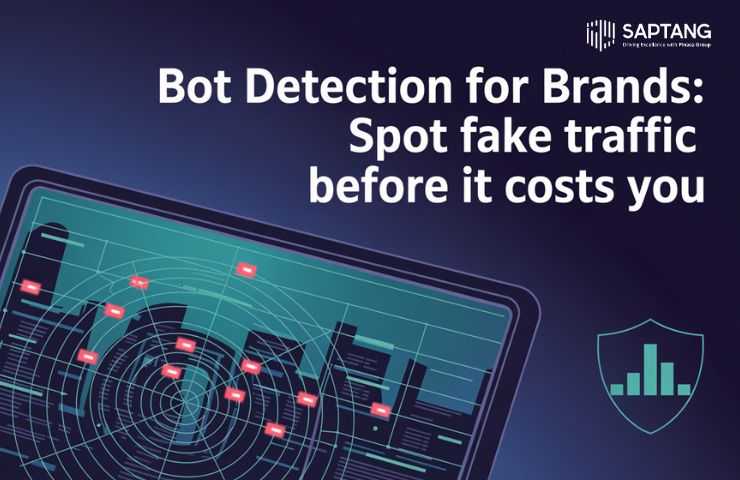
Think your brand is getting tons of traffic? That’s great—unless half of it isn’t human. Bots are no longer just a tech problem—they’re a brand problem. From inflated ad spend and skewed analytics to damaged reputations, fake traffic can quietly drain your marketing budget and distort business decisions.
In this post, we’ll break down how bot traffic targets brands, how to spot the signs, and what you can do to stop it before it starts costing you real money.
Bot traffic refers to non-human visits to your website or app, generated by automated scripts. While some bots—like Google’s crawler—are useful, others are built with malicious intent. These harmful bots can mimic user behavior, click on ads, scrape content, or even attempt credential stuffing on login forms.
For brands, this isn’t just noise—it’s damage. If your analytics tools can’t separate human users from bots, your marketing team might make decisions based on misleading data. Worse, you could be wasting ad dollars on impressions and clicks that never had a chance of converting.
Did you know?
A report by Imperva revealed that nearly 48% of all internet traffic in 2024 was bots, with over 30% being malicious.
Bot traffic doesn’t just mess with your website—it messes with your brand’s entire digital strategy. Here’s how:
Bots inflate traffic numbers and distort user behavior metrics. When fake users “interact” with your site, your bounce rate, time on site, and conversion paths no longer reflect real customer behavior. This can lead to flawed conclusions, wasted budget, and poor strategic decisions.
Bots click on your paid ads, burning through your ad budget without delivering any return. In performance marketing, where every click is measured for ROI, even a small percentage of bot clicks can cause serious financial loss.
Example:
If 10% of your PPC clicks are fake and you’re spending $20,000/month, that’s $2,000 lost to bots—every month.
When bots post fake reviews, spam your contact forms, or cause login errors for users, the brand experience suffers. Worse, if bot activity causes site slowdowns or downtime, it can erode customer trust and lead to churn.
Some bots aren’t just nuisances—they’re hostile. Credential stuffing bots can try thousands of logins per minute, testing for leaked passwords. Others scrape your proprietary content, steal pricing data, or scan for vulnerabilities.
Wondering if you’re already under attack? Here are common red flags that bot traffic may be inflating your numbers or hurting your performance:
If these signs sound familiar, it’s time to audit your traffic and start filtering out the noise.
Detecting bots isn’t just about guessing—it requires smart tools and data analysis. Here are some proven methods brands use to separate real users from bots:
Google Analytics Behavioral Analysis:
Look for unusual spikes in traffic, high bounce rates, or extremely short session durations. Setting up custom segments and filters helps isolate suspicious traffic sources.
Server-Side Logs:
Examining raw server logs can reveal repeated requests from the same IPs, suspicious user agents, or unusual activity patterns invisible to front-end analytics.
CAPTCHA and JavaScript Challenges:
These tools force interaction that only humans can easily complete, filtering out many automated bots.
Pro Tip: Combine multiple detection methods for layered defense—don’t rely on a single tool.
Once you’ve identified bot traffic, the next step is stopping it before it impacts your bottom line:
Rate Limiting:
Limit the number of requests from individual IP addresses or user agents to prevent floods of automated traffic.
IP Blacklists & Whitelists:
Block known malicious IP ranges while allowing trusted sources to pass through.
Behavioral Fingerprinting:
Analyze how visitors interact with your site—bots often have predictable patterns unlike real humans.
Multi-Layered Bot Detection Technology:
Use a combination of server-side filtering, client-side challenges, and AI-powered monitoring for maximum protection.
Employee Training & Alerts:
Train your marketing and IT teams to recognize signs of bot activity and set up alerts for unusual traffic patterns.
Bots aren’t just a nuisance—they’re a real threat that can distort your data, drain your marketing budget, and damage your brand reputation. The good news? With the right tools and strategies, you can spot fake traffic early and stop it from costing you.
Key points to remember:
Nearly half of all internet traffic is bots, many with malicious intent targeting brands like yours.
Ignoring bot traffic leads to inaccurate analytics, wasted ad spend, and security risks.
Use a layered approach combining analytics, specialized bot detection tools, and proactive prevention strategies.
Regularly audit your traffic and stay vigilant for suspicious activity.
Is your brand unknowingly paying for fake traffic? Don’t wait until it hurts your bottom line. Run a thorough traffic audit today or consult with a bot detection expert to safeguard your marketing investments and protect your brand’s digital reputation.
Ready to take control?
Contact us for a free bot traffic assessment or start with these simple steps to clean up your analytics now.